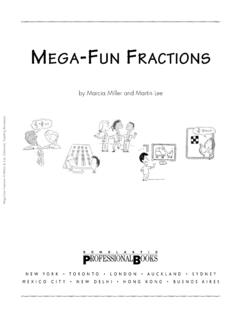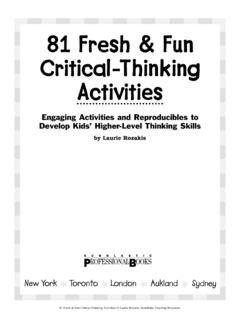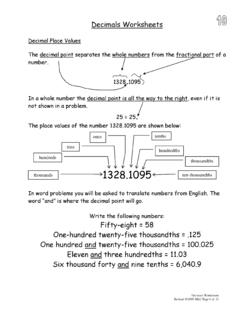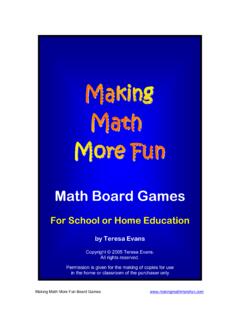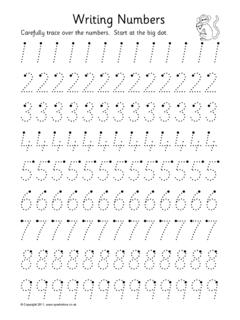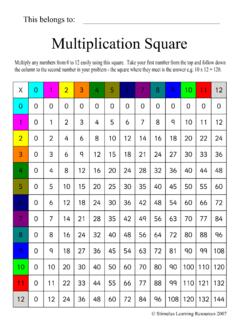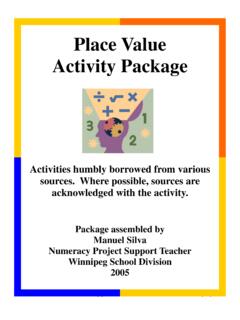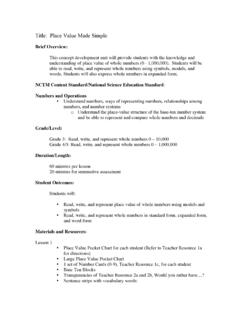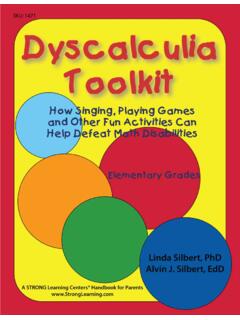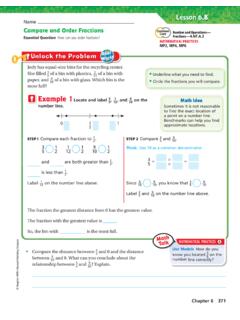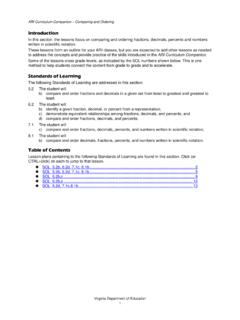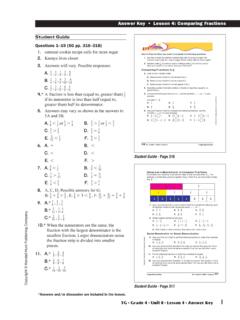Transcription of Equivalent Fractions and Comparing Fractions: Are You My ...
1 Equivalent Fractions and Comparing Fractions : Are You My Equal? Brief Overview: This four day lesson plan will explore the mathematical concept of identifying Equivalent Fractions and using this knowledge to compare proper Fractions . The students will utilize a variety of manipulatives to explore the relationships of Fractions with denominators of values up to 12. At the end of the unit, the students will play the game Are You My Equal? to demonstrate their knowledge. NCTM Content Standard/National Science Education Standard: Numbers and Operations Understand numbers, ways of representing numbers, relationships among numbers, and number systems Understand and represent commonly used Fractions , such as 1/4, 1/3, and 1/2.
2 Develop understanding of Fractions as parts of unit wholes, as parts of a collection, as locations on number lines, and as divisions of whole numbers; Use models, benchmarks, and Equivalent forms to judge the size of Fractions Recognize and generate Equivalent forms of commonly used Fractions , decimals, and percents; Grade/Level: Grades: 2-3 Duration/Length: 4 Days (60 minutes per day) Student Outcomes: Students will: Read, write, and represent Fractions as parts of a single region using symbols, words, and models Read, write, and represent Fractions as parts of a set using symbols, words, and models compare Fractions or mixed numbers with or without using the symbols (<, >, =) Read, write, and represent Fractions with different denominators as Equivalent compare and order fraction values on a number line from least to greatest Materials and Resources: Lesson #1.
3 Advance Preparation Necessary Fraction templates (Resource 1-T) Hershey Fraction Book (ISBN # 0-439-13519-2) Large blank sheet of paper to record student guesses for Hershey Fraction Book Fraction plates Fraction strips Equivalent Fractions Worksheet (Resource 2-S) Lesson #2: Fraction plates Fraction strips Dare to compare ! (Resource 4-S ) Rules For Comparing Fractions (Resource 6-S ) Lesson #3: Sheet with Hershey Bar fraction student guesses (from Lesson #1) Hershey candy bars 1 per student Fraction plates Fraction strips Fraction clothesline (Resource 7-S) Fraction clothes (Resource 9-S) Lesson #4.
4 4 foot clothesline 10 clothes pins 5 blank 3x5 note cards Note cards with the printed numbers (0, , 1) Gameboard (Resource 11-S ) Gameboard answer sheet (Resource 12-S ) Gameboard fraction cards (Resource 13- S ) 1 die per group Transparency of gameboard Transparency of answer sheet Fraction plates Fraction strips Overhead projector Development/Procedures: Lesson 1 Equivalent Fractions Advanced preparation: Prior to the lesson it is necessary to assemble the fraction plates. Print and cut out enough fraction templates (Resource 1-T) so that each pair of students will have a complete set.
5 Glue a template to each plate and make one cut to the middle of each plate along one of the fraction lines. In each set, include two blank cut plates that will be used in later lessons. Preassessment Gather the students on the carpet to discuss their prior knowledge of Fractions . On the board list and discuss what they know about Fractions and what they represent. Make sure that they understand that Fractions represent parts of a whole or a group. Write the word Equivalent on the board. Ask the students what they think this word means using mathematical vocabulary. Guide the students to the understanding that in mathematics, Equivalent means the same or equal.
6 Launch Introduce the students to the book, The Hershey s Milk Chocolate Fraction s Book by Jerry Pallotta and Rob Bolster. Show them the cover and ask the students which of the Fractions they see would give them the greatest share of the candy bar. Record their responses on the large blank sheet of paper by name. Each student must make a guess since we will use this information later in the unit. Read the story. Have the students return to their seats. Remember to keep the guess sheet for use during Lesson #3. Teacher Facilitation Divide the students into pairs. Pass out one set of assembled fraction paper plates to each pair of students.
7 Give the students time to investigate the different plates in their piles. Have the students hold up the plate that is divided into the fewest pieces (1/2). Have the students hold up the plate that is divided into the most pieces (1/12.) Have the students place these two plates in front of them and move the remainder of the plates to the upper left hand corner of their desk. Ask the students what they notice about the two fraction plates. (Guide their discussion to include: size of plate and number of pieces each is divided into.) Ask them how many twelfths they think it will take to equal of the plate (6).
8 Have the students connect the two fraction plates by sliding the plates together at the slit openings. Have the students demonstrate their understanding by correctly aligning the two plates to show 6/12 = . Next, have the students combine the 1/3 and 1/12 fraction plates to show a 1/3 equivalency. Student Application Have the students work with their fraction plates to explore other possible Equivalent combinations of . Have the student pairs raise their hand when they think they have discovered other 1/2 Equivalent fraction. Embedded Assessment Distribute (Resource 2-S ). Read and discuss the directions.
9 Ask the students to continue working in pairs to create other Equivalent Fractions using the various fraction plates according to the worksheet directions. Answers may be found on Resource 3-T Reteaching/Extension Reteach: If the students have difficulty understanding the concept of Equivalent Fractions in the pie format, have the students use fraction strips. Have the students line up all of the strips in order from fewest parts to greatest parts. They can then explore the equivalency concept using their strips. This will offer the student another opportunity to gain a visual concrete understanding of the concept.
10 Extension: Give the student the opportunity to create his/her own Equivalent fraction pair and record them on the bottom of their worksheet. Lesson 2 Comparing Fractions Preassessment Divide the class into pairs. Pass out the same fraction plates that were used in class for lesson #1. Remember that each pair of students should have one complete set of plates. Have each pair pick one person to show an Equivalent fraction using the plate and any other plate of their choosing. Have the partners switch and have the other person show an Equivalent fraction using the 1/3 plate and any other plate of their choosing.
